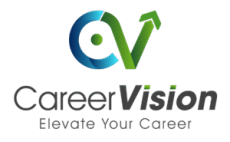In today’s job market, your LinkedIn profile isn’t just a digital resume; it’s your professional storefront.
Crafting a compelling online presence that aligns with your job applications can make a world of difference. Let’s dive into how you can optimize your LinkedIn profile to enhance visibility, maintain consistency, and elevate your professional branding across platforms.
The Importance of Consistency
Consistency across your online and offline presence is crucial. Imagine walking into an interview, and the hiring manager pulls up your LinkedIn profile only to find a completely different narrative than your resume. It’s like showing up to a fancy dinner in sweatpants—awkward and confusing. Ensure your LinkedIn profile mirrors your resume’s content, skills, and job titles. This reinforces your personal brand and enhances credibility. For more on why brand consistency matters, check out this article on brand consistency.
Optimizing Your LinkedIn Profile
Your LinkedIn profile should be more than just a collection of job titles; it should tell a story. Here are some actionable strategies:
- Craft a Compelling Headline: Instead of simply listing your job title, showcase your unique value proposition. For example, “Product Leader | Transforming Ideas into Impactful Solutions” is much more engaging than “Product Manager.”
- Write a Magnetic Summary: Use this space to highlight your career journey, achievements, and aspirations. Make it personal—include what drives you and why you’re passionate about your field.
- Showcase Your Skills: Highlight key skills relevant to the jobs you’re applying for. Use specific keywords that align with your desired roles to improve your searchability. For more tips on optimizing your profile, check out this comprehensive guide on optimizing LinkedIn profiles.
- Engage with Your Network: Share insightful content, comment on relevant posts, and join industry discussions. This not only increases visibility but positions you as an engaged professional in your field.
- Leverage Recommendations: Request recommendations from colleagues or supervisors that highlight your strengths and contributions. These testimonials can be the cherry on top of your profile.
Aligning Your Profile with Job Applications
When you apply for a job, tailor your LinkedIn profile to reflect the requirements of the position. This doesn’t mean you should lie or exaggerate; rather, emphasize experiences and skills that are most relevant. If a job description highlights teamwork, make sure your profile includes examples of collaborative projects.
As a product leader, I once pivoted roles and realized the importance of aligning my online presence to reflect my new career path. I updated not only my LinkedIn but also my resume to highlight transferable skills. This alignment made a huge difference in how recruiters perceived my candidacy.
Leveraging LinkedIn for Networking
Networking is essential in any job search. Use LinkedIn to connect with people in your target industries. You can start by engaging with connections, attending virtual events, or even reaching out for informational interviews. Remember, it’s not just about what you can gain; it’s about building genuine relationships. For more tips on effective networking, check out my article on networking on LinkedIn.
Conclusion: Your LinkedIn Profile as a Dynamic Tool
Your LinkedIn profile should be a living document that evolves with your career. By ensuring consistency and alignment between your profile and job applications, you enhance your branding and visibility. Remember, it’s not just about being seen; it’s about being remembered. Take the time to optimize your profile, and watch as new opportunities unfold.
Want real-time advice you can use? I run a free Job Search Strategy Workshop – come for the tips, stay for the community. It’s live, it’s free, and it actually helps.

